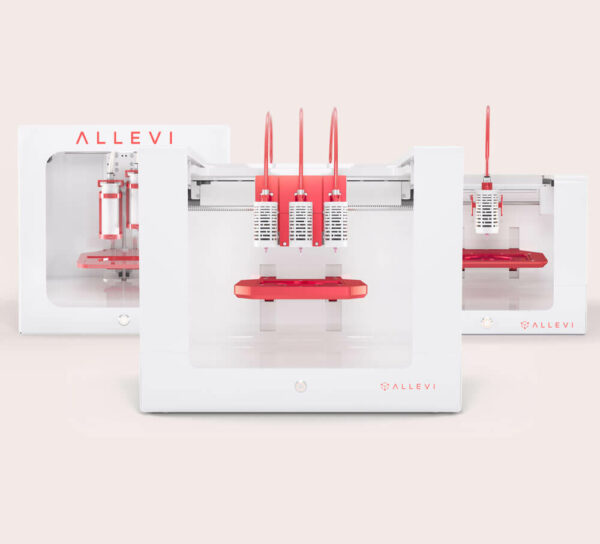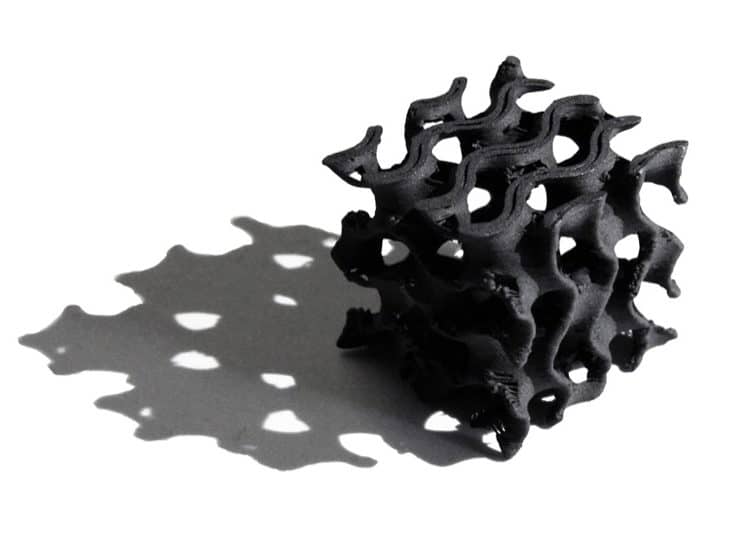
- About Allevi
- Bioprinters
- BioinksAdditivesAdditivesBioinksAdditivesAdditivesAdditivesAdditivesAdditivesAdditives
- Software
- Services
- Resources
- Support
Menu

Bioink Overview: 3D Graphene is a biomaterial made by Dimension Inx composed of > 90% graphene – a flexible, conductive, biocompatible material for muscle, nerve and cardiac tissue engineering. This biomaterial is printed at room temperature and can be seeded with cells post-print.
3D Graphene offers several unique advantages, including electrical conductivities greater than 800 S/m, significantly higher than previously reported 3D-printed carbon materials.
This conductive bioink can be deposited into user-defined structures and handled immediately after being bioprinted. The 3D bioprinted materials and structures can then be cut, folded, rolled, punched, and further handled as the user the desires. This is an excellent material choice for conductive tissue-related modeling, bioelectronics, soft sensors, basic science, and engineering research.
3D-Graphene has been shown in in vitro and in vivo studies to have significant regenerative capacity for tissues that rely heavily on electrical signaling, such as muscle, nerve, and cardiac tissues. Unlike other 3D-printable graphene materials which are primarily polymers with small amounts of graphene additives, 3D-Graphene is 75% by weight graphene, yet remains flexible. It may even be sutured to itself or to soft tissues.
With the Conductive Tissue Bioink Protocol, researchers can begin taking conductive tissue modeling and engineering to the next level.
We hope you found this bioink overview of 3D graphene helpful.